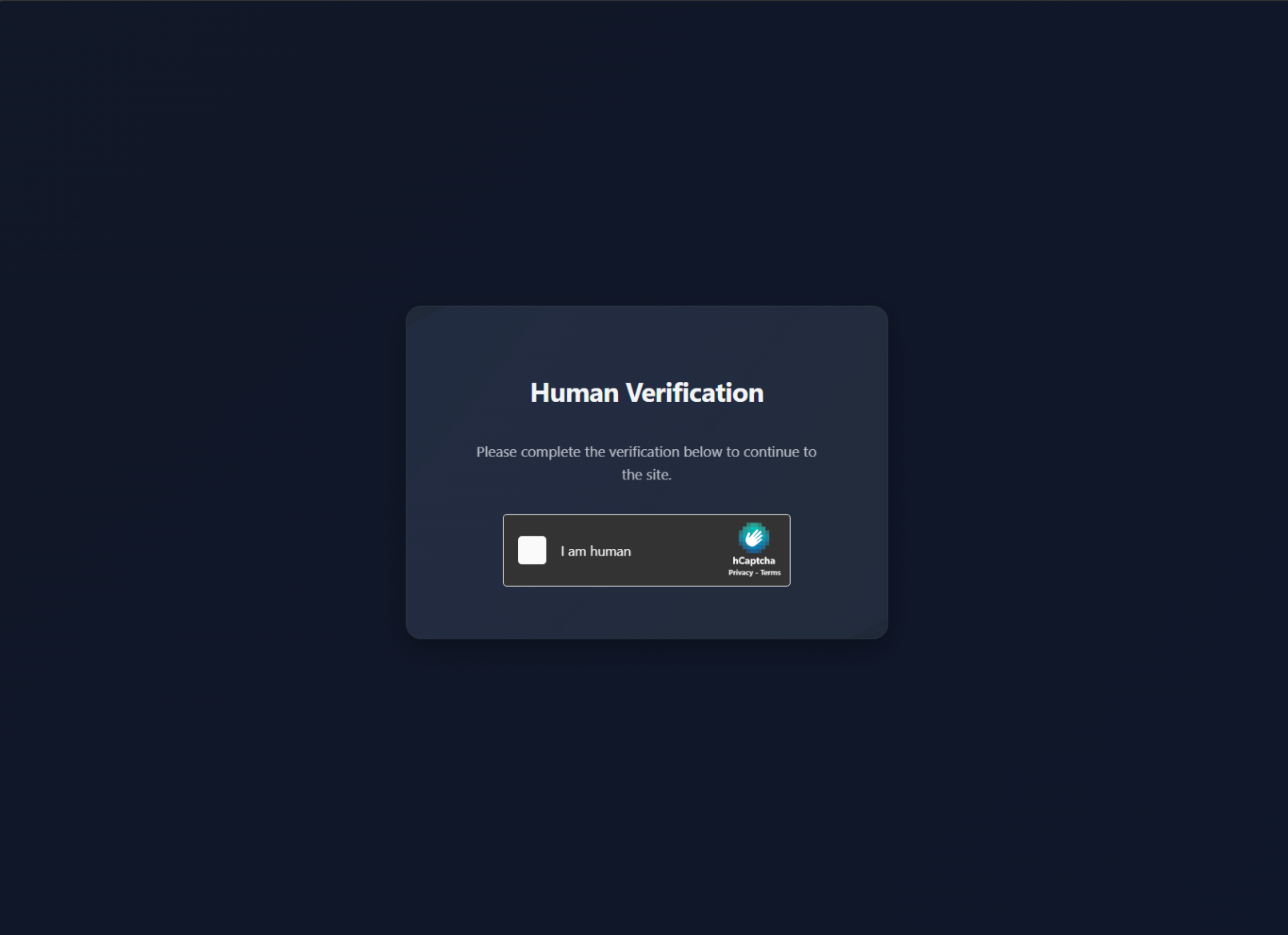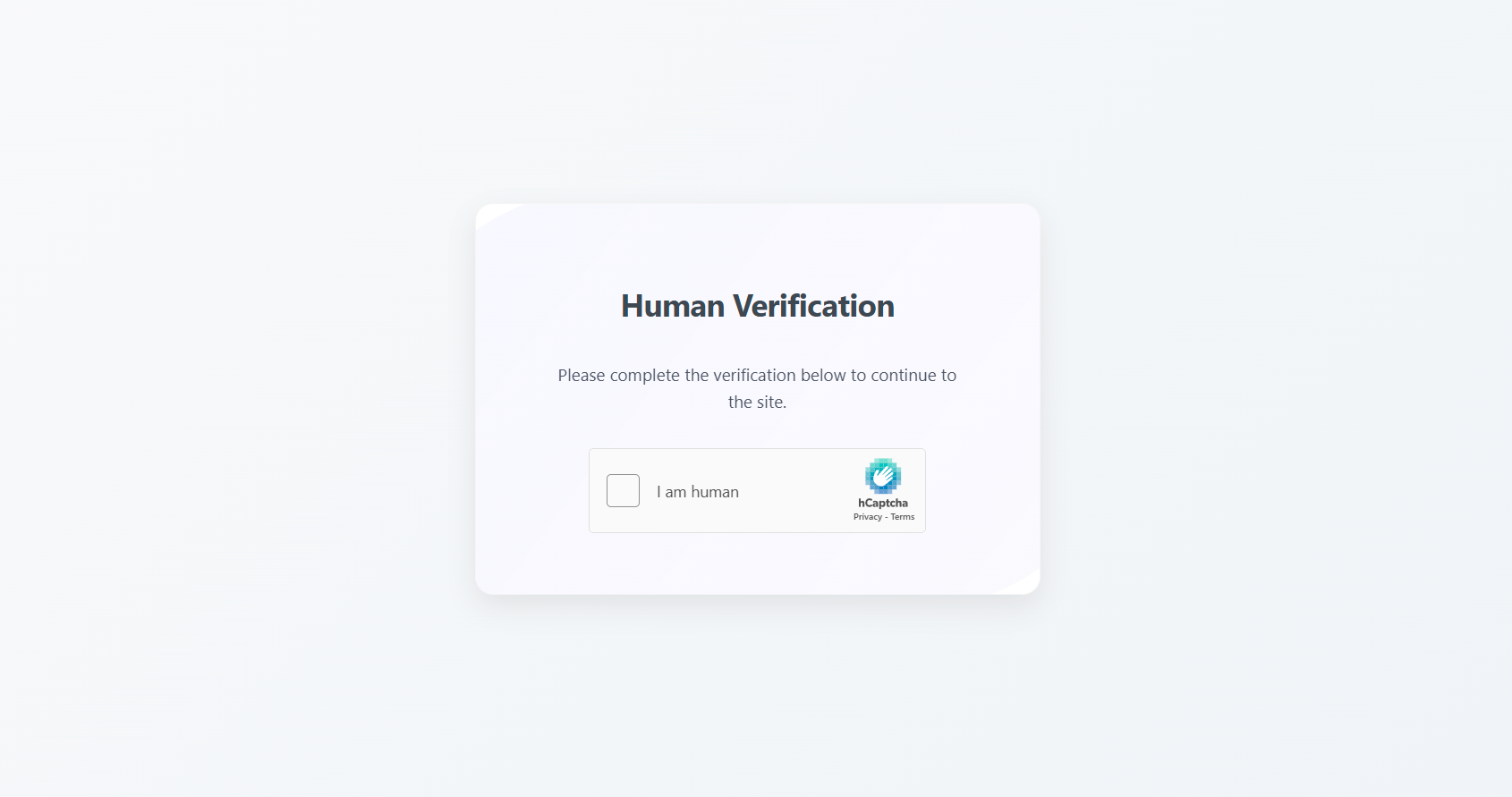Middlewares
Middleware system allows you to modify, filter, and enhance HTTP requests and responses in GoDoxy. Middlewares can be applied at different levels and in different ways to provide flexible request processing.
Quick Start
Application Methods
Middlewares can be applied in four ways:
| Method | Order | Use Case | Configuration |
|---|---|---|---|
| Entrypoint | Ordered | Global middlewares applied to all routes | config.yml |
| Middleware Compose | Ordered | Reusable middleware configurations | config/middlewares/*.yml |
| Docker Labels | Unordered* | Per-route middlewares | Container labels |
| Route Files | Unordered* | Per-route middlewares | Route configuration files |
TIP
For unordered middlewares, set priority manually when order matters.
Basic Example
# Global middleware (entrypoint)
entrypoint:
middlewares:
- use: real_ip
header: X-Real-IP
from: [127.0.0.1, 192.168.0.0/16]
# Per-service middleware (Docker labels)
services:
app:
...
labels:
proxy.aliases: myapp
proxy.myapp.middlewares.redirectHTTP.priority: 1
proxy.myapp.middlewares.cidrWhiteList.priority: 2
proxy.myapp.middlewares.cidrWhiteList.allow: 127.0.0.1, 10.0.0.0/16Naming Convention
Middleware names and option keys are case-insensitive. All these are equivalent:
redirectHTTPredirect_httpRedirectHttp
Configuration Syntax
1. Entrypoint & Middleware Compose
Ordered execution - middlewares run in the order they're defined.
# Entrypoint (config.yml)
entrypoint:
middlewares:
- use: CloudflareRealIP
- use: CIDRWhitelist
allow:
- 127.0.0.1
- 223.0.0.0/8
# Middleware Compose (config/middlewares/whitelist.yml)
myWhitelist:
- use: CloudflareRealIP
- use: CIDRWhitelist
allow:
- 127.0.0.1
- 223.0.0.0/82. Docker Labels
Unordered execution - use priority to control order.
# Single line format
proxy.#1.middlewares.{middlewareName}.{optionName}: { value }
proxy.#1.middlewares.{middlewareName}.{optionName2}: { value2 }
# YAML block format
proxy.#1.middlewares.{middlewareName}: |
{optionName}: {value}
{optionName2}: {value2}3. Route Files
Unordered execution - use priority to control order.
myapp:
middlewares:
{ middlewareName }:
{ optionName }: { value }
{ optionName2 }: { value2 }4. Reusing Middleware Compositions
Reference composed middlewares across different configuration methods:
# Docker labels
services:
app:
labels:
proxy.#1.middlewares.myWhitelist@file:
# Route file
myapp:
middlewares:
myWhitelist@file:
# Entrypoint
entrypoint:
middlewares:
- use: myWhitelist@file5. Bypass Rules
Skip middleware execution based on matching conditions.
middleware:
bypass:
- route myapp & path glob(/api/*)
- remote 192.168.0.0/16
- header User-Agent: *bot*See Rules syntax for complete bypass rule documentation.
Common Examples
Basic Configuration Examples
# Global middleware (config.yml)
entrypoint:
middlewares:
- use: cidr_whitelist
allow:
- 127.0.0.1
- 10.0.0.0/16
# Docker labels - YAML style
proxy.#1.middlewares.cidr_whitelist.allow: |
- 127.0.0.1
- 10.0.0.0/16
# Docker labels - single line
proxy.#1.middlewares.cidr_whitelist.allow: 127.0.0.1, 10.0.0.0/16
# Route file with multiple middlewares
openai:
host: https://api.openai.com/
middlewares:
cidr_whitelist:
allow:
- 127.0.0.1
- 10.0.0.0/16
modify_request:
set_headers:
Host: api.openai.com
homepage:
show: falseAdvanced: OIDC with Bypass Rules
WARNING
Global OIDC configuration can be complex. Test thoroughly in a development environment first.
# Global OIDC with bypass rules (config.yml)
entrypoint:
middlewares:
- use: oidc
bypass:
# Bypass specific routes
- route pocket-id
- route immich & glob(path /api/*)
- route karakeep & glob(path /api/v1/*)
# Bypass local networks
- remote 127.0.0.1
- remote 192.168.0.0/16
- remote 10.0.0.0/8
- remote 172.16.0.0/12
- remote 100.64.0.0/10
# Per-service OIDC bypass (Docker labels)
services:
vaultwarden:
labels:
# Allow Bitwarden apps to bypass OIDC
proxy.#1.middlewares.oidc.bypass: path glob(/identity/*) | path glob(/api/*) | path glob(/icons/*)
karakeep:
labels:
proxy.#1.middlewares.oidc.bypass: path glob(/api/v1/*)Available Middlewares
Authentication and Security
OIDC (OpenID Connect)
Name: oidc
Purpose: Authenticate users using OpenID Connect protocol
Uses settings from .env file with configurable overrides.
| Option | Description | Default | Required |
|---|---|---|---|
allowed_users | Override allowed users | GODOXY_OIDC_ALLOWED_USERS | No |
allowed_groups | Override allowed groups | GODOXY_OIDC_ALLOWED_GROUPS | No |
client_id | Override client ID | GODOXY_OIDC_CLIENT_ID | No |
client_secret | Override client secret | GODOXY_OIDC_CLIENT_SECRET | No |
scope | Override OAuth scope | GODOXY_OIDC_SCOPE | No |
hCaptcha
Name: hcaptcha
Purpose: Protect against bots using hCaptcha challenges
| Option | Description | Default | Required |
|---|---|---|---|
site_key | hCaptcha site key | - | Yes |
secret_key | hCaptcha secret key | - | Yes |
session_expiry | Session expiry time | 24h | No |
How it works:
- User sees captcha landing page before accessing protected route
- After solving captcha, user is redirected to the real page
- Captcha must be solved again after each
session_expiryperiod


Forward Auth
Name: forward_auth
Purpose: Delegate authentication to external auth service
Authenticates requests by sending metadata to an external auth service and either forwards the request upstream (with enriched headers) or returns the auth response to the client.
| Option | Description | Default | Required |
|---|---|---|---|
route | Forward-auth route name (alias) pointing to auth server | tinyauth | Yes |
auth_endpoint | Auth server endpoint path | /api/auth/traefik | Yes |
headers | Headers to forward from auth server to upstream | ["Remote-User", "Remote-Name", "Remote-Email", "Remote-Groups"] | No |
Behavior:
- Sends GET request to auth service at
route origin + auth_endpoint - Clones request headers and populates X-Forwarded-* headers
- Non-2xx/3xx response: Returns auth response to client (including redirects)
- 2xx response: Copies configured headers to request and forwards upstream
Example:
# Docker labels
proxy.myapp.middlewares.forward_auth: |
route: tinyauth
auth_endpoint: /api/auth/traefik
headers: Remote-User, Remote-Name, Remote-Email, Remote-Groups
# Route file
myapp:
middlewares:
forward_auth:
route: tinyauth
auth_endpoint: /api/auth/traefik
headers: Remote-User, Remote-Name, Remote-Email, Remote-GroupsTraffic Control
Redirect HTTP
Name: redirect_http
Purpose: Redirect HTTP requests to HTTPS
Simple middleware with no configuration options.
Custom Error Pages
Name: custom_error_pages
Purpose: Customize error page responses
See Custom Error Pages for detailed documentation.
IP Resolution
Real IP
Name: real_ip
Purpose: Resolve correct client IP from proxy headers
NOTE
Recommended for entrypoint - affects $remote_addr, $remote_host, access logs, and CIDRWhitelist middleware.
| Option | Description | Default | Required |
|---|---|---|---|
header | Real IP header name | X-Real-IP | No |
from | List of trusted CIDRs or IPs | - | Yes |
recursive | Recursive mode | true | No |
Recursive Mode:
true: Choose first IP that doesn't matchfromlistfalse: Choose last IP that doesn't matchfromlist
Example:
X-Forwarded-For: 1.2.3.4, 192.168.0.123, 10.0.0.123from: 192.168.0.0/16, 10.0.0.1
| Recursive | Result |
|---|---|
true | 1.2.3.4 |
false | 10.0.0.123 |
entrypoint:
middlewares:
- use: real_ip
header: X-Real-IP
from:
- 127.0.0.1
- 192.168.0.0/16
- 10.0.0.0/8
recursive: trueCloudflare Real IP
Name: cloudflare_real_ip
Purpose: Cloudflare real IP resolution for Cloudflare Proxy/Tunnels
NOTE
This preset skips all local IPs.
Preset Values:
header:CF-Connecting-IPfrom: Cloudflare IPs (updated hourly from official sources)recursive:true
Trusted IPs:
- Cloudflare IPv4
- Cloudflare IPv6
- All local IPs
Access Control
CIDR Whitelist
Name: cidr_whitelist
Purpose: Allow/deny requests based on client IP ranges
See request-level access control for detailed documentation.
Rate Limiter
Name: rate_limit
Purpose: Limit request rate per client
| Option | Description | Default | Required |
|---|---|---|---|
average | Average requests per period | - | Yes |
burst | Maximum requests allowed in a period | - | Yes |
periods | Time period format: number[unit] | 1s | No |
Example:
rate_limit:
average: 10
burst: 20
periods: 1mRequest and Response Modification
Modify Request or Response
Names: modify_request / request / modify_response / response
Purpose: Modify HTTP headers and paths before sending to upstream
| Option | Description | Default | Required |
|---|---|---|---|
set_headers | Set/replace headers | - | No |
add_headers | Add additional headers | - | No |
hide_headers | Remove headers | - | No |
add_prefix | Add prefix to request path | - | No |
Supported Variables
NOTE
Use $ prefix for variables for YAML files.
Use $$ in Docker Compose, single $ will result in environment variable substitution.
| Variable | Description |
|---|---|
| Request Variables | |
req_method | HTTP method (GET, POST, etc.) |
req_scheme | URL scheme (http/https) |
req_host | Host without port |
req_port | Port number |
req_addr | Host with port |
req_path | URL path |
req_query | Raw query string |
req_url | Full request URL |
req_uri | Encoded path?query |
req_content_type | Content-Type header |
req_content_length | Request body length |
| Client Variables | |
remote_addr | Client IP address |
remote_host | Client IP (parsed) |
remote_port | Client port |
| Response Variables | |
resp_content_type | Response Content-Type |
resp_content_length | Response body length |
status_code | HTTP status code |
| Upstream Variables | |
upstream_name | Server name/alias |
upstream_scheme | Server scheme |
upstream_host | Server host |
upstream_port | Server port |
upstream_addr | Server address with port |
upstream_url | Full server URL |
| Dynamic Variables | |
header(name) | Get request header |
resp_header(name) | Get response header |
arg(name) | Get query parameter |
Header Modification Examples
Set Headers (Replace existing):
# Docker labels
proxy.myapp.middlewares.request.set_headers: |
X-Custom-Header1: value1, value2
X-Real-IP: $$remote_host
# Route file
myapp:
middlewares:
request:
set_headers:
X-Custom-Header1: value1, value2
X-Real-IP: $remote_hostAdd Headers (Append to existing):
# Docker labels
proxy.myapp.middlewares.request.add_headers: |
X-Custom-Header1: value1, value2
X-Custom-Header2: value3
# Route file
myapp:
middlewares:
request:
add_headers:
X-Custom-Header1: value1, value2
X-Custom-Header2: value3Hide Headers (Remove from upstream or response):
# Docker labels - Example: Hide headers from upstream
proxy.myapp.middlewares.request.hide_headers: X-Real-IP, X-Forwarded-For
# Route file - Example: Hide headers from response
myapp:
middlewares:
response:
hide_headers:
- X-Custom-Header1
- X-Custom-Header2X-Forwarded Headers
Hide X-Forwarded Headers
Name: hide_x_forwarded
Purpose: Remove Forwarded and X-Forwarded-* headers before sending to upstream
# Docker labels
proxy.myapp.middlewares.hide_x_forwarded:
# Route file
myapp:
middlewares:
hide_x_forwarded:Set X-Forwarded Headers
Name: set_x_forwarded
Purpose: Override X-Forwarded-* headers with GoProxy-provided headers (instead of appending)
# Docker labels
proxy.myapp.middlewares.set_x_forwarded:
# Route file
myapp:
middlewares:
set_x_forwarded:Content Modification
Modify HTML
Name: modify_html
Purpose: Inject or replace HTML content using CSS selectors
| Option | Description | Default | Required |
|---|---|---|---|
target | CSS selector for target element | - | Yes |
html | HTML content to inject | - | Yes |
replace | Replace instead of append | false | No |
Behavior:
- Content-Type filtering: Only processes HTML responses
text/htmlapplication/xhtml+xml
- Append mode (default): Appends to first matching element
- Replace mode: Replaces all matching elements
- Error handling: Gracefully handles malformed HTML and missing targets
- Content-Length: Automatically updates response headers
Multiple Target Behavior:
When multiple elements match the CSS selector:
- Append mode: Only the first matching element is modified
- Replace mode: All matching elements are replaced
Example with multiple .container elements:
<!-- Original -->
<div class="container">First container</div>
<div class="container">Second container</div>
<!-- Append mode: target=".container", html="<p>Added</p>" -->
<div class="container">
First container
<p>Added</p>
</div>
<div class="container">Second container</div>
<!-- Replace mode: target=".container", html="<p>Replaced</p>", replace=true -->
<p>Replaced</p>
<p>Replaced</p>Error Handling:
- Invalid HTML: Restores original content and logs warning
- Target not found: Returns original content unchanged
- Malformed selectors: No modification occurs
- Empty HTML injection: No visible change but processes normally
Supported CSS Selectors:
| Type | Example | Description |
|---|---|---|
| Element | body, head, div | Select by element name |
| ID | #main | Select by ID attribute |
| Class | .container | Select by class attribute |
| Attribute | [data-test='target'] | Select by attribute value |
Examples:
Inject CSS into head:
# Docker labels
proxy.myapp.middlewares.modify_html: |
target: head
html: '<style>body { background-color: red; }</style>'
# Route file
myapp:
middlewares:
modify_html:
target: head
html: '<style>body { background-color: red; }</style>'Add footer to body:
# Docker labels
proxy.myapp.middlewares.modify_html: |
target: body
html: <footer>Footer content</footer>
# Route file
myapp:
middlewares:
modify_html:
target: body
html: <footer>Footer content</footer>Replace main content:
# Docker labels
proxy.myapp.middlewares.modify_html: |
target: main
html: <section><h2>New Content</h2></section>
replace: true
# Route file
myapp:
middlewares:
modify_html:
target: main
html: <section><h2>New Content</h2></section>
replace: trueComplex injection with scripts and styles:
# Route file
myapp:
middlewares:
modify_html:
target: body
html: |
<script src="/static/app.js"></script>
<link rel="stylesheet" href="/static/style.css"/>Themed
Name: themed
Purpose: A preset for modify_html that easily injects theme CSS into HTML responses
| Option | Description | Conflicts With | Allowed Values |
|---|---|---|---|
theme | Predefined theme name | css | dark, dark-grey, solarized-dark |
font_url | Custom font URL | - | Full URL |
font_family | Font family name | - | String |
css | Custom CSS | theme | URL, File with file:// prefix, Full CSS |
Example:
app:
middlewares:
themed:
theme: dark
font_url: https://fonts.googleapis.com/css2?family=Inter:wght@400;700&display=swap
font_family: Inter
css: |
body {
color: red !important;
}
# or
css: file://path/to/custom.css
# or
css: https://example.com/custom.css